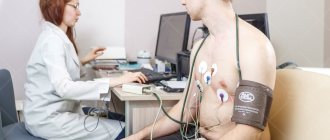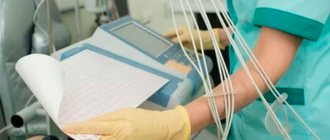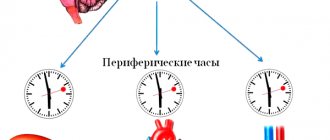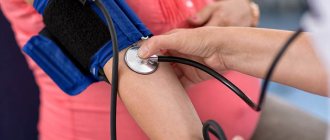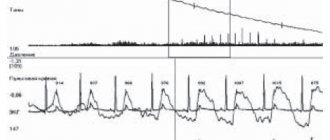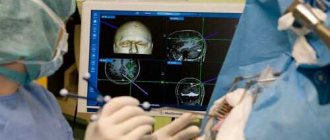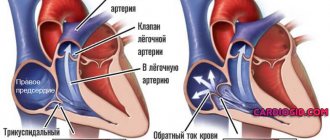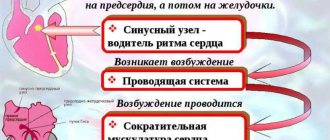Download Slideshow
PDF file
The patient's diary is filled out independently. Filling out the diary is a mandatory condition for conducting the survey. If the diary does not record the stress, medication and your sensations, the doctor will not be able to assess their effect on the heart and the study may be useless.
During monitoring, you should not wear synthetic or woolen underwear (cotton only). You can place the monitor next to you while you sleep.
Instructions for preparing for Holter monitoring
The diary should note:
Holter monitoring diary sample
Holter monitoring is an important diagnostic procedure that evaluates the functional functioning of the heart and the entire cardiovascular system during normal human activity. The examination can be completed within 1-3 days, so it is very important to carefully follow all the doctor’s recommendations. The key to the success of a correct diagnosis after the procedure is a detailed diary of a person’s activities. How to fill out a Holter monitoring diary? Let's look at examples and basic rules.
Actions and sensations during the day
During daily monitoring, the patient should keep a daily diary, which should indicate the actions performed during the examination period. In the column “Other actions during the day”, the actions performed, the time of their implementation and the sensations to which you want to draw the doctor’s attention are noted in detail. It is important to record the state of rest or physical activity (movement on the street and indoors), as well as emotional experiences and stressful situations during the day, the time of meals and medications.
Holter monitoring diary: filling rules
Filling out a diary is a simple but responsible task for each patient. Records are kept throughout the duration of the study: it is important to record all details of life activity, such as sleep, work, rest, etc.
After “connecting” the recorder to the patient’s body, the doctor issues a Holter monitoring diary form, which consists of a sample and a new personal form. Visually, diaries may differ in different medical institutions, but the essence of the document does not change: the patient writes down all his affairs and lifestyle of a particular day hourly.
The diary details the beginning and end of all events during the day: night and day sleep, food intake, physical and psycho-emotional stress, as well as all sensations and symptoms.
For example, in the afternoon after lunch you walked in the park. Then you need to make a note in your diary that there was a walk in the fresh air from 2 to 3 p.m. Another example: in the evening there was a holiday, and you and your friends sang karaoke. In this case, the diary indicates: “from 21-23.30 - active recreation, dancing, singing karaoke.” The most important thing is to record exactly what you did and when. Remember that the purpose of Holter monitoring is to evaluate the functioning of the heart under normal conditions, so you should continue to lead your usual lifestyle.
Holter Monitoring Diary: Sample
Below is a sample diary that is issued to all patients in the laboratory of the CMD Center for Molecular Diagnostics.
The diary records all types of activities: physical, mental, emotional. If the study is carried out for more than a day, then a mandatory requirement is to describe the quality of sleep (insomnia, heavy morning rise, etc.). When performing Holter monitoring, smoking and moderate alcohol consumption are allowed, but all this must also be recorded in a diary (number of cigarettes and volume of alcohol consumed). In some cases, the doctor may ask you to indicate the use of coffee, which also affects the change in heart rhythm.
Your internal sensations will be an important addition for the doctor: headaches, sensations of rapid heartbeat, shortness of breath and other conditions are very important to record.
The doctor’s personal requirements for your diary
Depending on individual complaints, the doctor may prescribe additional requirements for filling out the Holter monitoring diary.
First of all, the doctor will ask you to indicate periods of unexpected stressful situations (unpleasant conversation, quarrels), times of chest pain or dizziness, specific active physical activity (morning exercises, climbing stairs, playing with children).
If you take medications on an ongoing basis or were forced to take a pill during the procedure, then this also needs to be recorded. The diary indicates the time of administration, the name of the medicine and the dosage.
As a result of a successfully performed procedure, the doctor will be able to evaluate the functioning of the heart and identify the causes of heart rhythm disturbances.
Remember that any clarifying information in the Holter monitoring diary will help the doctor make the correct diagnosis.
Holter (24-hour) ECG monitoring – complete instructions for the patient
Pulling behind the sternum? Rapid heartbeat or slow pulse? Do you experience a fluttering feeling in your chest? How can a modern method of heart research, Holter ECG monitoring, also known in common parlance as Holter, help in such cases?
To find out this, we visited an appointment with a general practitioner, cardiologist at the Expert Voronezh Clinic, Angelina Anatolyevna Kalinina.
— Angelina Anatolyevna, what is Holter monitoring and why is it prescribed?
Holter ECG monitoring or, in other words, daily monitoring of heart function is a method of electrophysiological instrumental diagnostics that allows continuous recording of an electrocardiogram using a special device.
This method is used in clinical practice in the field of cardiology, therapy to identify disturbances in the rhythm and conductivity of the heart, ischemic changes (especially with contraindications to the so-called “stress tests” - for example, bicycle ergometry), as well as for monitoring and control in the treatment of rhythm disturbances and coronary heart disease.
You can sign up for Holter monitoring here
— What symptoms of the cardiovascular system are an indication for Holter monitoring?
These are spontaneous, inexplicable episodes of loss of consciousness, dizziness, especially without any obvious reason (staying in a stuffy room, excitement, etc.); any sensations of heart rhythm disturbances (rapid or rare pulse; interruptions, “freezing”, “tumbling” in the heart area; shortness of breath, chest pain; night awakenings, especially accompanied by shortness of breath, breathing problems).
A leading neurologist talks about the possible causes and diagnosis of dizziness
"Clinic Expert Kursk" Umerenkova Natalya Vladimirovna
The study is also advisable if the patient or his relatives have a certain heart pathology (including hereditary pathology), and it can be carried out even in the complete absence of complaints. These are diseases such as hypertrophic cardiomyopathy, long QT syndrome, short QT syndrome, and ventricular preexcitation syndromes. Additionally, Holter ECG monitoring can be prescribed to evaluate the performance of an artificial pacemaker after a myocardial infarction.
— Is this diagnosis carried out only for adults? Or do children also undergo a daily ECG?
Of course, Holter monitoring is also used to examine children. Of course, the child’s adequate and conscious behavior is important (following any doctor’s instructions during the study, avoiding unintentional breakdown of the electrodes or damage to the device, etc.). Those. These are organizational and technical aspects. In principle, there are no obstacles to researching children.
— How does Holter monitoring differ from a simple ECG? Why is a regular ECG not enough?
The fundamental difference is the likelihood of detecting some pathological abnormalities. It is incomparably higher during Holter monitoring. It often happens that a doctor, during an objective examination of a patient, clearly records rhythm disturbances, but there is nothing on the ECG. The problem with an ECG in such cases is the short duration of the study and the absence of a person’s usual load (for example, walking). Rhythm disturbances, especially if they are unstable, may not “get” on a regular ECG purely statistically.
Heart, why don't you want peace? What causes tachycardia? Cardiologist says
"Clinic Expert Kursk" Novikova Elena Viktorovna
— Patients often ask questions: what is better: Holter monitoring or cardiac echo, Holter or cardiac ultrasound? Tell us, is there an alternative to the method of daily ECG monitoring?
Holter does not have an alternative that is identical in terms of capabilities. The fact is that echocardiography and Holter monitoring evaluate different aspects related to the structure and function of the heart.
Ultrasound allows you to “see” the structure of the organ, its parts (chambers, valve apparatus), their sizes, the presence of some structural features, functional characteristics associated with the operation of the valves, the movement of blood and the walls of the heart. However, it will not say anything about the type of heart rhythm disturbances, possible myocardial ischemia, which is especially important - outside of a state of rest.
Holter monitoring answers these questions. On the other hand, Holter will not help in any way to evaluate, for example, the valve apparatus, or to determine the presence of defects or blood clots in the cavities of the heart.
When is it prescribed and what will a heart ultrasound show? Read more
Therefore, these studies are not mutually exclusive, but complementary, and to complete the picture, it is recommended to perform both diagnostics.
— Are there any contraindications to Holter monitoring?
There are no such restrictions, rather restrictions. There may be, for example, some difficulties when applying electrodes (severe deformation of the chest, acute inflammatory processes on the skin in this area); mental disorders and corresponding behavior, which may create a risk of incorrect data collection or damage to the device, leading to inaccurate keeping of the research diary; You may be allergic to the adhesive plaster used to secure the electrodes.
— Angelina Anatolyevna, how to properly prepare for a daily ECG?
No special preparation of the patient for daily ECG monitoring is required. If a man has thick hair on his chest, it is recommended to shave it off where the electrodes are applied for optimal contact of the electrodes with the skin.
— How is the Holter monitoring procedure performed?
The person arrives at the appointed time. Several electrodes are placed on his chest, fixed and connected with wires to a portable recording device.
For additional support of the electrodes, a cotton T-shirt or T-shirt is put on top, tightly fitting to the body.
The person is given instructions, including how to keep a diary, and is released for a day. A day later he returns, the device is removed and the data is decrypted.
— Please give an example of how to correctly fill out a Holter monitoring diary?
First of all, it describes what the patient did during the entire study period and his physiological state. The time of sleep, wakefulness, physical exercise, walking, running, eating and taking medications (as agreed with the attending physician, with the name of the drug), driving, emotional stress (even quarrels, etc.) are noted. The exact time of occurrence of complaints is recorded: pain of any localization with its nature (dull, squeezing, stabbing, burning, etc.) and duration; feelings of tightness in the chest; palpitations or rare pulse, “fading” of the heart; episodes of weakness; dizziness, etc. It is very advisable to indicate under what circumstances the complaints appeared (during exercise or at rest, after emotional stress, etc.), how they went away (after stopping the exercise, taking medication, calming down, etc.).
In other words, the more detailed the diary, the more valuable information the doctor will receive.
— Does the patient need to take sick leave during 24-hour monitoring?
No, it is not issued.
— What can and cannot be done under any circumstances while wearing a Holter monitoring device?
The rules for wearing a halter are relatively simple, but at the same time important.
It is possible and advisable to wear a tight-fitting cotton tank top or T-shirt to ensure that the electrodes adhere more closely to the skin.
At night, do not remove the device, choosing a comfortable position in bed.
If the electrode comes off, call your doctor or nurse immediately and wait for further instructions.
Do not wet the electrodes (showering, swimming). It is undesirable to be in an area with electromagnetic radiation (microwave oven, etc.). You should not carry your mobile phone in your pocket or talk on it for a long time.
Otherwise, you can lead your usual lifestyle, with the possible exception of active sports.
— Is it possible to use a computer for Holter monitoring?
This is not desirable, at least not for long.
Other
What should be the daily routine?
The most common one. Medicines should be taken in accordance with the prescription of the attending physician. When you sleep, it is best to do this on your back or right side. Be sure to include in your diary the time you fell asleep and woke up, and describe the quality of your sleep.
What not to do
- wash and bathe (you can only wash your face and brush your teeth);
- Ultrasound;
- physiotherapy,
- massage;
- FGS;
- undergo a tomograph;
- undergo X-ray examinations;
- ride a bike;
- clean the floor;
- do push-ups or exercise;
- lift weights.
What to limit:
- working on a computer;
- talking on a cell phone;
- rides in the elevator;
- riding a tram and trolleybus;
- any load on the shoulder girdle.
Loading your legs is not contraindicated. You can take a walk or go to the store in complete peace.
Be careful not to hit the recorder!
Indications and contraindications for Holter monitoring
Holter monitoring can be prescribed both to diagnose the disease and to assess the effectiveness of treatment if the diagnosis has already been made. Often the procedure is prescribed to patients in whom a regular cardiogram did not reveal any abnormalities, but there are symptoms such as:
- cardiopalmus;
- blood pressure surges;
- pain and squeezing in the chest;
- dyspnea;
- dizziness;
- fainting.
An examination may also be prescribed if a regular ECG does not allow an accurate diagnosis and the correct treatment.
The Holter monitoring procedure is absolutely harmless and painless, therefore it has no contraindications and can be performed even during pregnancy and breastfeeding.
What is recommended to do
- To climb up the stairs.
- Walk in the fresh air at a brisk pace (you need to walk at speed for 20-40 minutes).
During the Holter monitoring study, doctors recommend doing three stair climbs (if you have no contraindications). It is best to climb at a normal pace; if you are tired, stop; the load should not be excessive. Holter assesses your normal exercise capacity, not your overload.
All painful and unpleasant sensations should be recorded in a diary:
- shortness of breath;
- strong heartbeat;
- interruptions in heart function;
- chest pain - dull, sharp, stabbing, pressing. It is important to record the duration of the pain and its relationship to exercise, stress or fatigue.
Additional recommendations for blood pressure monitoring
- Daily blood pressure monitoring is carried out in order to more accurately determine blood pressure levels and the degree of its reduction during treatment.
- The device measures your blood pressure by inflating a cuff placed on your upper arm and then gradually deflating it, just as a doctor measures your blood pressure. Measurements occur automatically at a certain time interval (most often during the day after 15 - 20 minutes, at night after 30 - 40 minutes). Before starting the next measurement, the monitor gives a warning sound. When you hear it or feel that the cuff on your arm has begun to inflate, stop and do not move while the device is inflating and, especially when releasing air, keep your straightened arm with the cuff relaxed and motionless until the very end of the measurement. Do not move or bend your arm during measurement. Otherwise, this measurement may fail and the device may repeat it after 1 minute.
- If you experience any unpleasant sensations that may be associated with changes in blood pressure, you can start an extraordinary measurement by pressing the “Start” button on the monitor.
- If you see that the cuff has slipped off your shoulder or is twisted, contact medical staff or, if this is not possible, correct it yourself between measurements. Note this in your diary.
- Be sure to record the quality of your night's sleep in your diary - did the monitor interfere with your sleep?
What to write in your diary
If your doctor has told you to keep a diary, you will need to write down the key moments of your day. Be sure to record the time:
- taking medications;
- eating;
- sleep (both night and day, if there was any);
- emotional stress, if any;
- actions of different activity (be sure to record the exact moment of change of actions of different activity; the time of their change can be recorded approximately).
| Category | Examples |
| Passive rest and low physical activity activities | Watching TV, reading, crafts, studying, writing |
| Activities that may require emotional stress | Playing computer or gambling games, driving vehicles |
| Light physical activity | Walk in the park, morning exercises |
| Average physical activity | Climbing stairs above the 3rd floor, easy jogging |
| Intensive loads | Workout in the gym, jogging for more than 20 minutes. |
How is Holter monitoring performed?
The procedure is very simple:
- The patient undresses to the waist.
- At the site where the electrodes are attached, the hair is shaved and the skin is degreased with alcohol.
- Special disposable electrodes (similar to those used for a regular ECG) are attached to the body.
- A battery-powered device is attached to the electrodes by wires, which records the electrical activity of the heart throughout the day and saves it to the built-in memory. It can be fastened to the patient’s body using a special belt or fixed in another way for the convenience of the subject (so that there is no need to carry it in his hands or in his pocket).
- With the device, the patient leads his normal lifestyle. Sometimes the doctor may ask the patient to do some physical exercise during Holter monitoring. This is necessary in order to assess the heart’s response to stress and its recovery after it. The doctor may also ask you to keep a diary in which the patient writes down what he did during the day and at what time and when he went to bed.
- After a day (this is the minimum period of examination, sometimes the doctor may prescribe longer ECG monitoring - up to 7 days) the patient comes to the clinic to remove the device.
- At the end of the procedure, the disposable electrodes are peeled off and thrown away. And the specialist connects the device to the computer. Then it views and decrypts the received data.
Recommendations for the patient
Carrying out Holter monitoring does not require special training, but some recommendations are worth following. So, before installing the device, it is better to take a shower and thoroughly wash your head and body, since this will not be possible during the examination: the device is afraid of moisture, and you cannot remove it. When going to the doctor, you should wear tight-fitting clothes made of natural fabric from the waist up. Tight-fitting clothing will give the electrodes connected to the body additional support. Wearing synthetic fabric is not recommended, as it can become electrified, which will lead to data distortion.
The device itself must be protected from water, overheating and hypothermia. It is undesirable to be near sources of electromagnetic radiation: a transformer box, a working microwave, etc. During sleep, you need to be careful so that the electrodes do not come off.
The procedure for daily ECG monitoring is prescribed by a cardiologist or arrhythmologist. You can undergo this examination in Volgograd, Volzhsky and Mikhailovka at the DIALINE clinics. We use the most advanced high-precision equipment, which will not cause discomfort to the patient and will allow us to obtain all the necessary data. Cardiograms are interpreted by highly qualified specialists with extensive experience, which guarantees an accurate diagnosis and the prescription of effective therapy.
To make an appointment, use your personal account on our website or contact us by phone.
Decrypted data
On the results sheet you will see the following indicators.
| Index | Norm |
| Average heart rate during the day | 60–100 beats per minute |
| Average heart rate at night and during daytime sleep | 41–81 beats/min |
| Daily graph of heart rate changes | Changes when changing activities |
| Number of supraventricular extrasystoles | Up to 960 supraventricular extrasystoles per day (up to 40 per hour) |
A slight excess of the norm (up to 1200 pieces per day) does not pose a threat to life and health
The permissible quantity that does not threaten life and health is 200 pcs. per day
PQ – 120–200 ms
Note! The norms indicated in the table are averaged and do not take into account age and individual characteristics of the body. Ask your doctor about the norm for you personally.
Click on photo to enlarge
